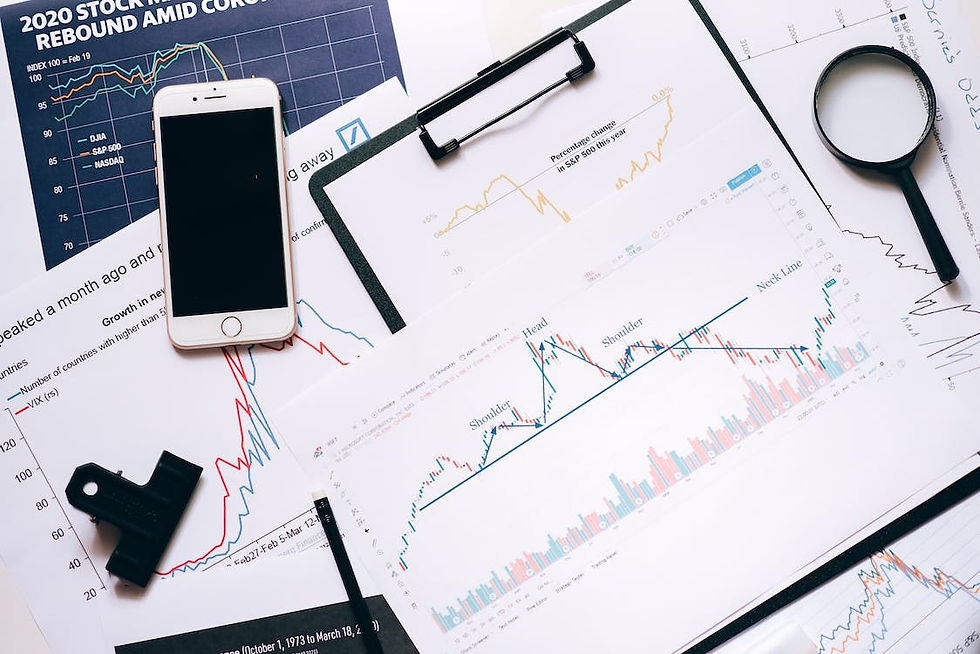精準管理農業資源:CropSense和智慧農業的結合
- Kate Garcia

- 2023年11月10日
- 讀畢需時 8 分鐘
智能農業是當今農業領域的一個快速發展領域,結合了先進的技術和農業管理,旨在提高農業生產效率、降低環境影響,並確保食品供應的可持續性,在這一領域中CropSense和其預測分析平台扮演著重要的角色,為智能農業系統的智慧化管理提供支持,CropSense和其預測分析平台的應用,以及它們在提高農業生產效率和資源管理方面的優勢。

CropSense的概述
CropSense是一個基於物聯網和感測技術的智能農業系統,旨在監測和控制農作物生長環境,並提供關鍵的監測和分析數據,利用感測器收集土壤濕度、氣候條件、降雨量和光照等數據,通過無線網絡將數據傳輸到預測分析平台進行分析和處理,CropSense的目標是提供準確的農作物生長情況監測,幫助農民做出明智的管理決策,並最大程度地提高農業生產效率。
預測分析平台的應用
CropSense的預測分析平台是其核心組件之一,它利用大數據分析和機器學習技術,從感測器數據中提取有價值的信息並生成預測模型,這些模型可以用於預測農作物的生長趨勢、病蟲害風險、灌溉需求和收成時間等,預測分析平台通過整合多源數據,如氣象數據、土壤資訊和作物生長紀錄,提供準確的預測和洞察力,幫助農民做出更明智的決策,CropSense是一個預測分析平台,主要用於農業領域,使用歷史的Sentinel-2 衛星數據來訓練一個AI模型,該模型被用來監測農業土地。借助CropSense,可以每天確定哪些農作物在哪些土地上生長,這使得人們能夠更好地估計預期的產量,以及天氣、氣候或疫病事件的影響。
CropSense可以為選定的農作物生成特定區域的產量預測,模擬農作物生長曲線時,會考慮到土壤、天氣和歷史生長模式,通過使用農作物生長模型、天氣數據和當前的衛星數據,產量預測會考慮到如乾旱期等當前事件,並相應地調整產量預測。
CropSense可以根據每日更新的衛星數據識別哪些農作物在哪個區域生長,在CropSense區域監控中,AI模型根據農作物生長的基礎對區域進行分類,並與存儲的土地使用數據進行比較,與檢測到的作物和存儲的作物非常可能匹配的區域被標記為綠色,匹配概率非常低的區域被標記為黃色和紅色。
CropSense的產量預測可以為選定的農作物和任何區域運行,模擬植物生長、乾物質、氮消耗以及每公頃的產量,模擬考慮了天氣預報數據和有關生長路徑(基於歷史衛星圖像)、天氣和土壤的歷史數據。
優勢與應用案例
CropSense和其預測分析平台具有多項優勢,可以提高農業生產效率和資源管理,以下是一些具體的應用案例:
智能灌溉:預測分析平台可以分析土壤濕度數據和氣象條件,準確預測植物的灌溉需求,基於這些預測結果,CropSense可以智能調節灌溉系統,使其僅在需要時才提供適量的水源,減少浪費並節約水資源。
病蟲害監測:CropSense的感測器可以檢測病蟲害風險指標,如溫度、濕度和環境條件等,預測分析平台利用這些數據,可以提前預測病蟲害爆發的可能性,農民可以及時採取適當的防治措施,減少損失和農藥使用。
生產計劃優化:基於預測分析平台的預測模型,農民可以優化生產計劃和收成時間,這些模型可以預測作物生長的速度和品質,幫助農民做出適當的種植安排和收割時間,以提高產量和質量。
結論
CropSense和其預測分析平台是智能農業系統的關鍵組件,通過整合物聯網、感測技術和大數據分析,提供智慧化的農業管理解決方案,這些技術的應用為農民提供準確的監測數據和預測模型,幫助他們做出更明智的決策,同時提高農業生產效率和資源管理,隨著智能農業的快速發展,CropSense和預測分析平台的應用前景令人期待,將有助於實現可持續的農業發展,為我們的食品供應鏈帶來更大的效益和可靠性。
CropSense在實際社會中的應用例子:
精準灌溉管理:CropSense的感測器可以監測土壤濕度、氣候狀況和降雨量等數據,農民可以預測分析平台,精確地掌握植物的灌溉需求,並通過智能調節灌溉系統提供適量的水源。這樣可以節約水資源,同時確保作物獲得足夠的水分,提高生長效率和產量。
病蟲害管理:CropSense的感測器可以檢測病蟲害風險指標,如溫度、濕度和環境條件等,預測分析平台利用這些數據,可以提前預測病蟲害的發生概率和趨勢,這使農民能夠及時採取防治措施,例如適時施用農藥或調整種植方式,以減少損失並保護作物的健康。
作物生長預測:CropSense的預測分析平台結合感測器數據和氣象資訊,可以建立作物生長模型並預測作物的生長趨勢。農民可以根據這些預測結果,優化種植計劃和收成時間,以確保作物在最佳的生長時期獲得最高品質和產量。
資源管理和環境保護:CropSense的智能監測系統有助於有效管理農業資源。農民可以利用感測器數據和預測分析平台,合理分配灌溉水源和肥料,以減少浪費和環境污染。同時,CropSense可以監測土壤和水質狀況,提供相應的建議和措施,以保護土壤和水源的可持續利用。
這些例子展示了CropSense在精準灌溉、病蟲害管理、作物生長預測以及資源管理和環境保護等領域的應用潛力,為農業領域帶來了更智能化和可持續的管理方法,有助於提高農業生產效率、減少資源浪費,並實現可持續農業發展。
實際上有許多公司和組織致力於開發和應用智能農業技術,並提供類似的農業監測和預測分析解決方案,以下是一些在智能農業領域活躍組織:

John Deere:John Deere是一家知名的農業機械製造商,提供包括農業感測技術在內的智能農業解決方案。
Trimble Agriculture:Trimble Agriculture提供智能農業解決方案,包括感測器、監測系統和預測分析平台,幫助農民提高生產效率和可持續性。
Climate Corporation:Climate Corporation是一家屬於Monsanto(現在是Bayer)旗下的公司,提供基於大數據和機器學習的智能農業解決方案,包括作物模型和氣象數據分析。
Agribotix:Agribotix是一家專注於農業無人機和影像分析的公司,其解決方案用於作物監測、病蟲害檢測和灌溉管理等。
這些公司是智能農業領域的領先者,它們提供類似於CropSense的系統或類似的解決方案,還有其他許多公司也在這個領域進行相關研究和開發。
Precise Agricultural Resource Management: The Integration of CropSense and Smart Agriculture
Smart Agriculture: Enhancing Efficiency and Sustainability with CropSense and its Predictive Analytics Platform
Smart agriculture is a rapidly growing field in the agricultural industry that combines advanced technology and agricultural management to improve productivity, reduce environmental impact, and ensure the sustainability of food supply. In this field, CropSense and its predictive analytics platform play a crucial role in supporting the intelligent management of smart agricultural systems. This article explores the applications of CropSense and its advantages in improving agricultural productivity and resource management.
Overview of CropSense CropSense is an IoT and sensor-based smart agriculture system designed to monitor and control crop growth environments. It provides essential monitoring and analytical data by collecting data on soil moisture, climatic conditions, rainfall, and light through sensors. The data is then transmitted wirelessly to the predictive analytics platform for analysis and processing. CropSense aims to provide accurate monitoring of crop growth, assisting farmers in making informed management decisions and maximizing agricultural productivity.
Applications of the Predictive Analytics Platform The predictive analytics platform of CropSense is one of its core components. It utilizes big data analysis and machine learning techniques to extract valuable insights from sensor data and generate predictive models.
These models can be used to forecast crop growth trends, pest risks, irrigation needs, and harvesting times. By integrating multiple data sources such as weather data, soil information, and crop growth records, the predictive analytics platform provides accurate predictions and insights, enabling farmers to make wiser decisions. CropSense is a predictive analytics platform primarily used in the agricultural domain. It trains an AI model using historical Sentinel-2 satellite data to monitor agricultural lands. With CropSense, it becomes possible to determine which crops are growing on which lands on a daily basis. This enables better estimation of expected yields and the impact of weather, climate, or disease events.
CropSense can generate specific area yield predictions for selected crops, considering soil, weather, and historical growth patterns. By using crop growth models, weather data, and current satellite imagery, yield predictions account for current events such as drought periods and adjust the yield forecast accordingly.
CropSense can identify which crops are growing in specific areas based on daily updated satellite data. In CropSense's regional monitoring, AI models classify regions based on the basis of crop growth and compare them with stored land use data. Areas that match the detected and stored crops with a high probability are marked as green, while areas with a low probability are marked as yellow and red.
CropSense's yield predictions can operate for selected crops and any given area. The simulations consider plant growth, dry matter, nitrogen consumption, and yield per hectare. Simulations take into account weather forecast data and historical data on growth paths (based on historical satellite images), weather, and soil.
Advantages and Application Cases CropSense and its predictive analytics platform offer several advantages that enhance agricultural productivity and resource management.
Here are some specific application cases:
Precision Irrigation Management: The predictive analytics platform analyzes soil moisture data and weather conditions to accurately predict plant irrigation needs. Based on these predictions, CropSense can intelligently adjust the irrigation system to provide an optimal amount of water only when necessary, reducing waste and conserving water resources.
Pest Monitoring: CropSense's sensors can detect pest risk indicators such as temperature, humidity, and environmental conditions. The predictive analytics platform utilizes this data to forecast the likelihood and trends of pest outbreaks. Farmers can take timely preventive measures, such as applying pesticides or adjusting planting methods, to minimize losses and protect crop health.
Production Planning Optimization: Using the predictive models of the predictive analytics platform, farmers can optimize production plans and harvest times. These models can predict the speed and quality of crop growth, helping farmers make appropriate planting schedules and harvest timings to maximize yield and quality.
Resource Management and Environmental Protection: CropSense's intelligent monitoring system contributes to effective agricultural resource management. Farmers can utilize sensor data and the predictive analytics platform to allocate irrigation water and fertilizers efficiently, reducing waste and environmental pollution. At the same time, CropSense can monitor soil and water quality and provide corresponding recommendations and measures to ensure the sustainable use of soil and water resources.
These examples demonstrate the potential applications of CropSense in precision irrigation management, pest monitoring, crop growth prediction, resource management, and environmental protection. CropSense brings intelligence and sustainability to the field of agriculture, enabling increased productivity, reduced resource waste, and the realization of sustainable agricultural development.
There are many companies and organizations actively involved in developing and applying smart agriculture technologies, offering similar agricultural monitoring and predictive analytics solutions. Here are some prominent organizations in the field of smart agriculture:
John Deere: John Deere is a renowned agricultural machinery manufacturer that provides smart agriculture solutions, including agricultural sensing technologies.
Trimble Agriculture: Trimble Agriculture offers smart agriculture solutions, including sensors, monitoring systems, and predictive analytics platforms, to help farmers improve productivity and sustainability.
Climate Corporation: Climate Corporation, a subsidiary of Monsanto (now Bayer), provides data-driven smart agriculture solutions, including crop modeling and weather data analysis.
Agribotix: Agribotix specializes in agricultural drones and image analysis for crop monitoring, pest detection, and irrigation management.
These companies are leaders in the field of smart agriculture, offering systems similar to CropSense or similar solutions. Many other companies are also conducting related research and development in this field.
#智能農業 #感測技術 #物聯網 #預測分析 #CropSense #精準灌溉 #環境保護 #病蟲害監測 #數據分析 #生產效率 #可持續性 #農業科技 #智慧農業 #農業管理 #農業創新 #SmartAgriculture #SensingTechnology #InternetofThings #PredictiveAnalytics #CropSense #PrecisionIrrigation #EnvironmentalProtection #PestMonitoring #DataAnalysis #ProductionEfficiency #Sustainability #AgriculturalTechnology #SmartFarming #AgriculturalManagement #AgriculturalInnovation






Comentarios